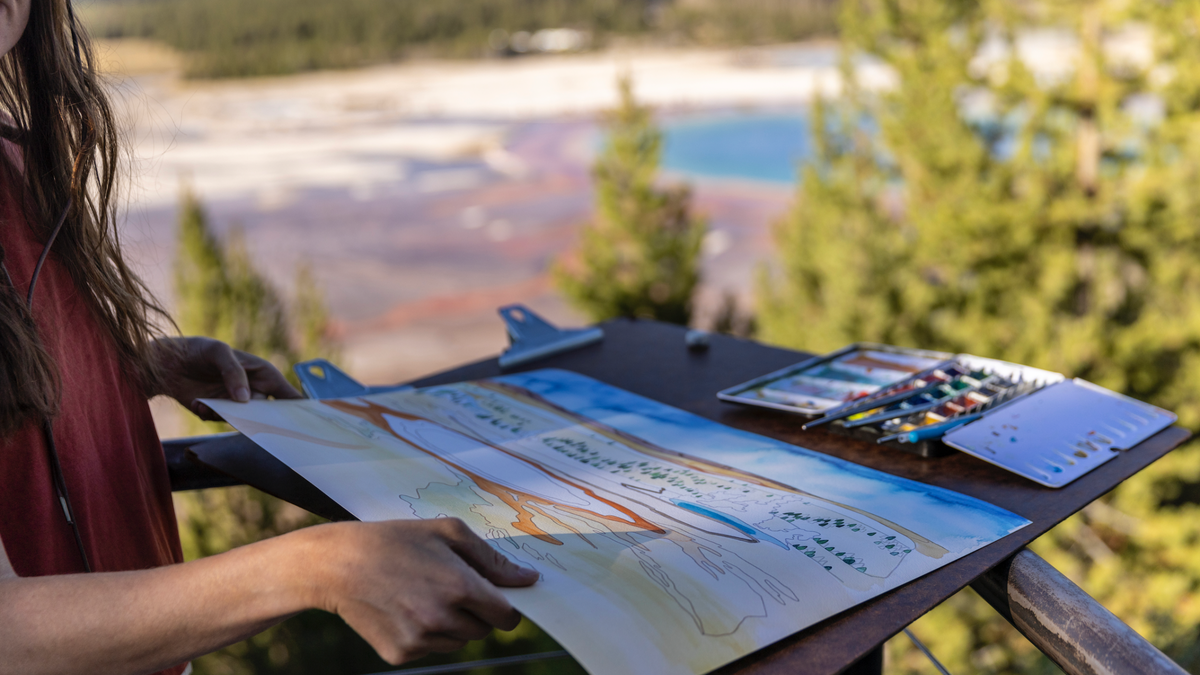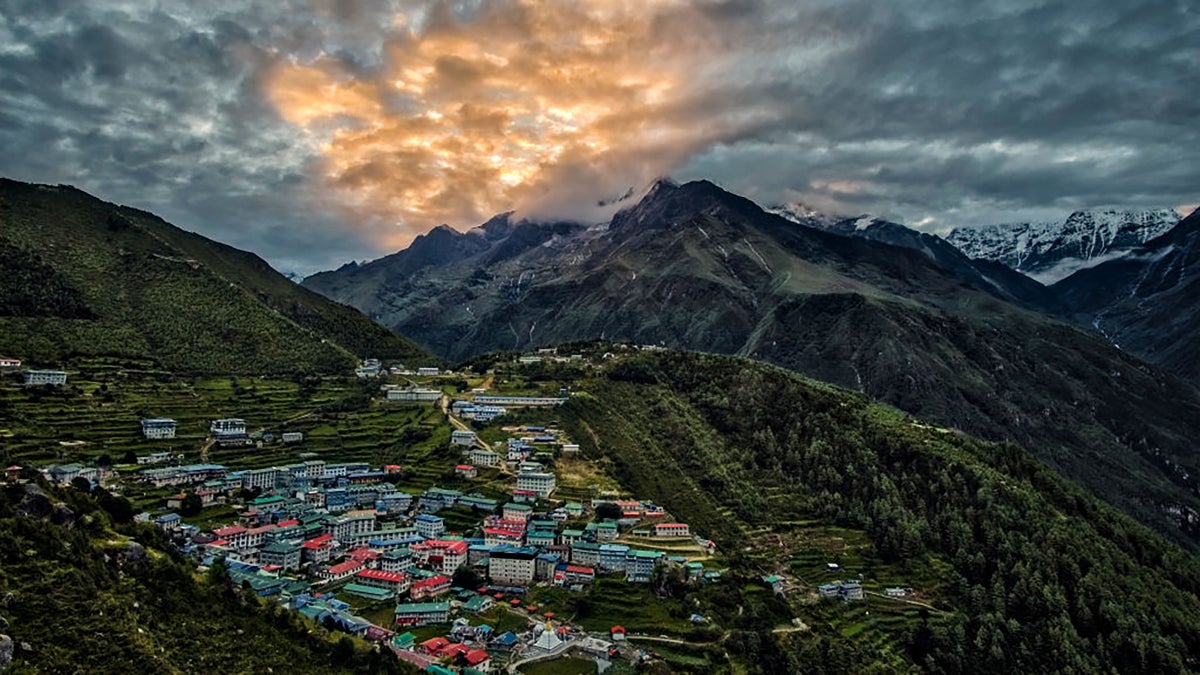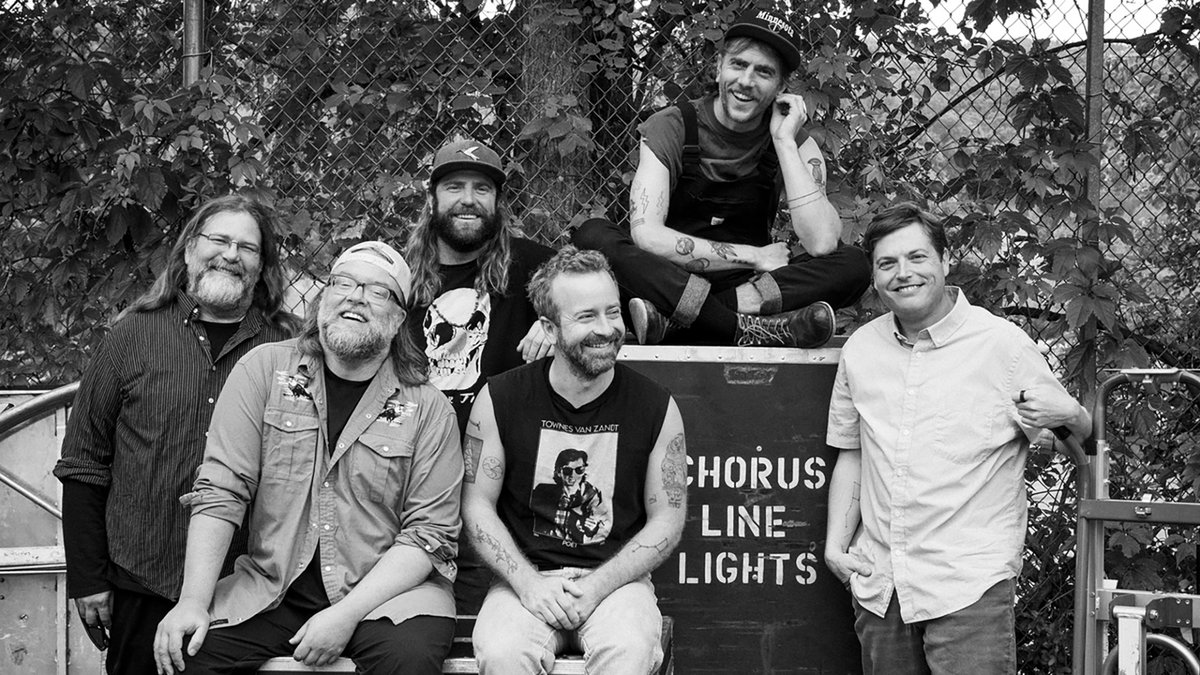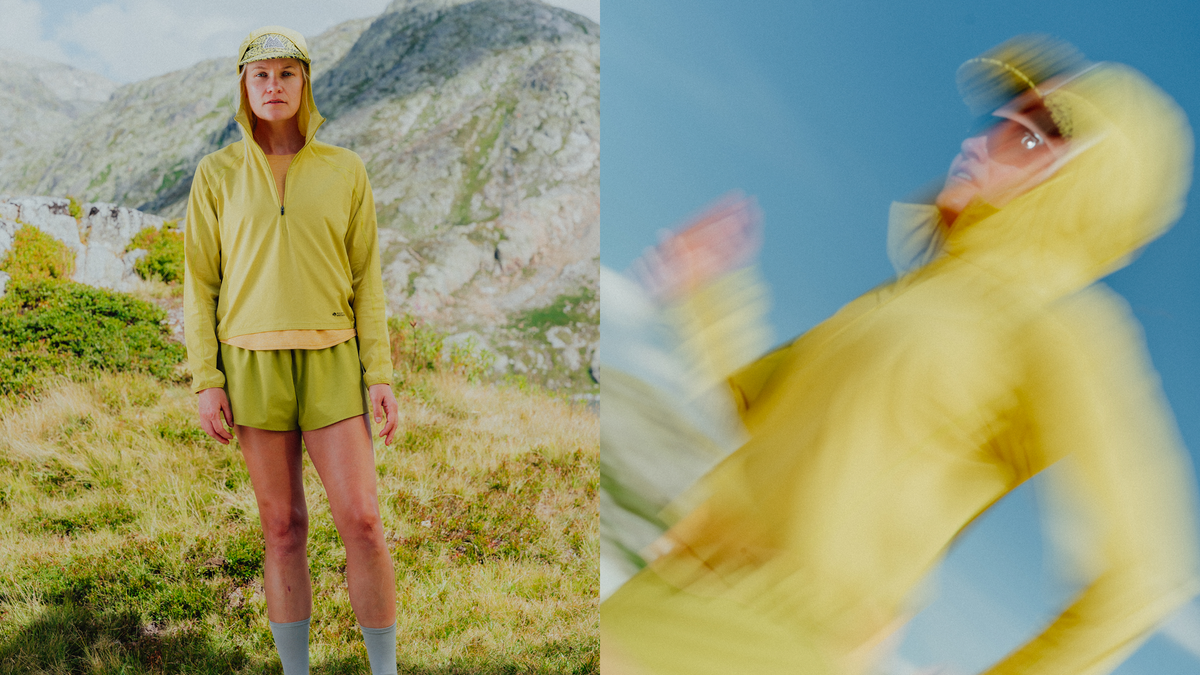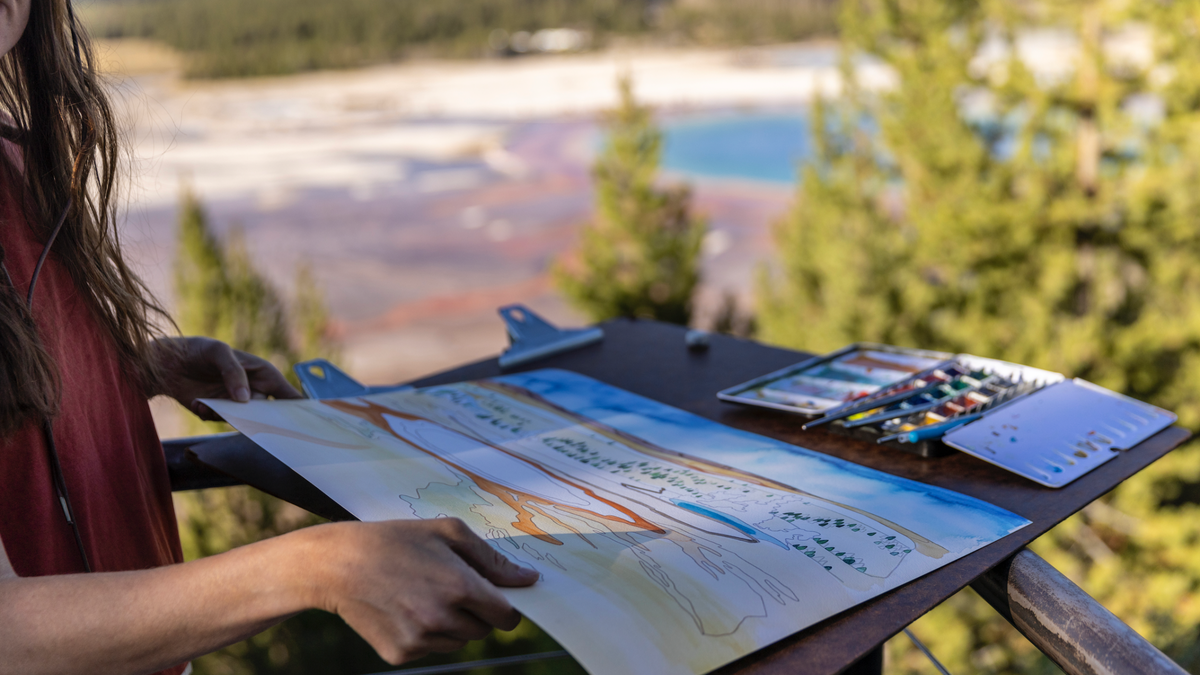
For Bryn Merrell, art began as a necessity. When she first started painting, she was working as a guide for a bike touring company. “As guides, we didn’t have much time to ourselves because we were always making breakfast, fixing flat tires, figuring out logistics, and answering questions,” she says. It was rare that she got a moment to breathe, let alone soak in the beauty of the vast western landscapes she was lucky enough to call her office. “I started painting on those trips because it forced me to slow down and soak it all up a little bit while I could,” Merrell says. “It would help calm this feeling of burnout.”
Painting also gave her a new perspective on outdoor recreation. This was a way of getting to know the natural world on a more intimate level—its textures, colors, and intricacies—and to enjoy it without having to worry about achieving or conquering. Art has since become a vocation for Merrell, but it still feels meditative, even after all these years. And it’s still a way for her to reconnect with herself and what matters. Painting Grand Prismatic Spring in Yellowstone, she said, left her with a feeling of overwhelming gratitude. “We’re so lucky that we protected these places,” she said. “I want to bring my daughter back to enjoy them some day.”
The Prismatic Spring Color Wheel
Every concentric ring of Yellowstone National Park’s Grand Prismatic geothermal pool correlates to a different temperature, and therefore a different pigment. Here’s where the colors come from.
 Blue: Clean water at the spring’s heated center is too hot to host bacteria.
Blue: Clean water at the spring’s heated center is too hot to host bacteria.
 Green: Chlorophyll forms in a blue-green algae (Synechococcus) that loves warm water.
Green: Chlorophyll forms in a blue-green algae (Synechococcus) that loves warm water.
 Yellow: Carotenoids (the same things that make carrots orange) are found in a bacteria that likes lukewarm temperatures.
Yellow: Carotenoids (the same things that make carrots orange) are found in a bacteria that likes lukewarm temperatures.
 Orange: Green, yellow, and red colors blend in a bacteria (Chloroflexi) that has both carotenoids and chlorophyll.
Orange: Green, yellow, and red colors blend in a bacteria (Chloroflexi) that has both carotenoids and chlorophyll.
 Red: A mix of different bacteria that thrive in cooler temperatures makes this striking color.
Red: A mix of different bacteria that thrive in cooler temperatures makes this striking color.
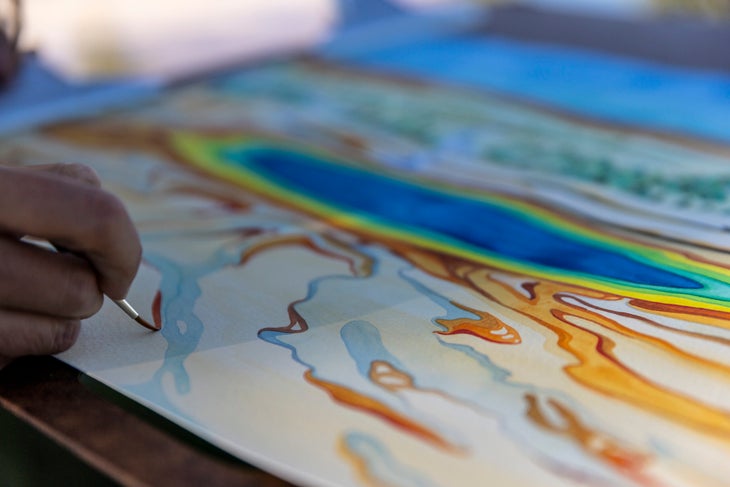
Raise a Toast: Prismatic Cooler
Celebrate a great day in the national park with this custom recipe and Yellowstone Bourbon, which was founded in 1872 to honor America’s first national park, and which continues to support the national park system today.
Glassware: Collins
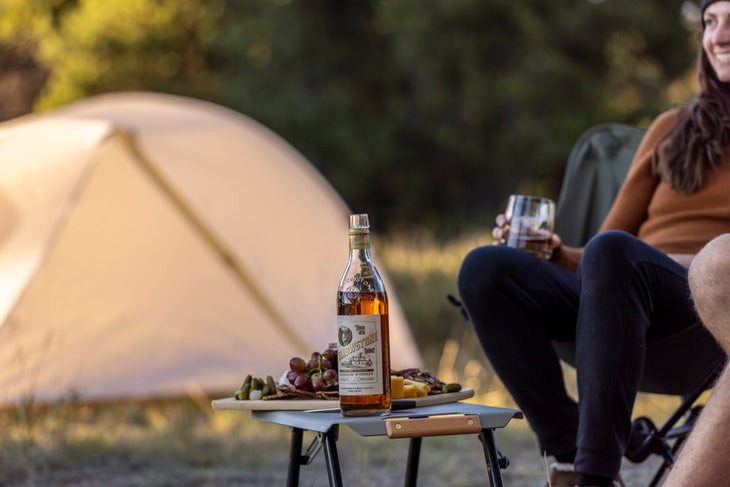
Ingredients
- 1.5 oz Yellowstone Bourbon Rum Cask
- 4 oz lemonade
- 3/4 oz butterfly pea simple syrup
- 1–2 oz seltzer water
- Mint or lemon for garnish
Directions
- Fill Collins glass with ice.
- Combine all ingredients into the glass and top with seltzer water.
- Gently stir.
Established in 1872, Yellowstone Bourbon was crafted to honor the sprawling wonder of America’s first national park. It’s what first inspired us to create approachably smooth whiskey for the benefit and enjoyment of the people, and why we still do it today.
The post How Yellowstone Inspires Art appeared first on Outside Online.











